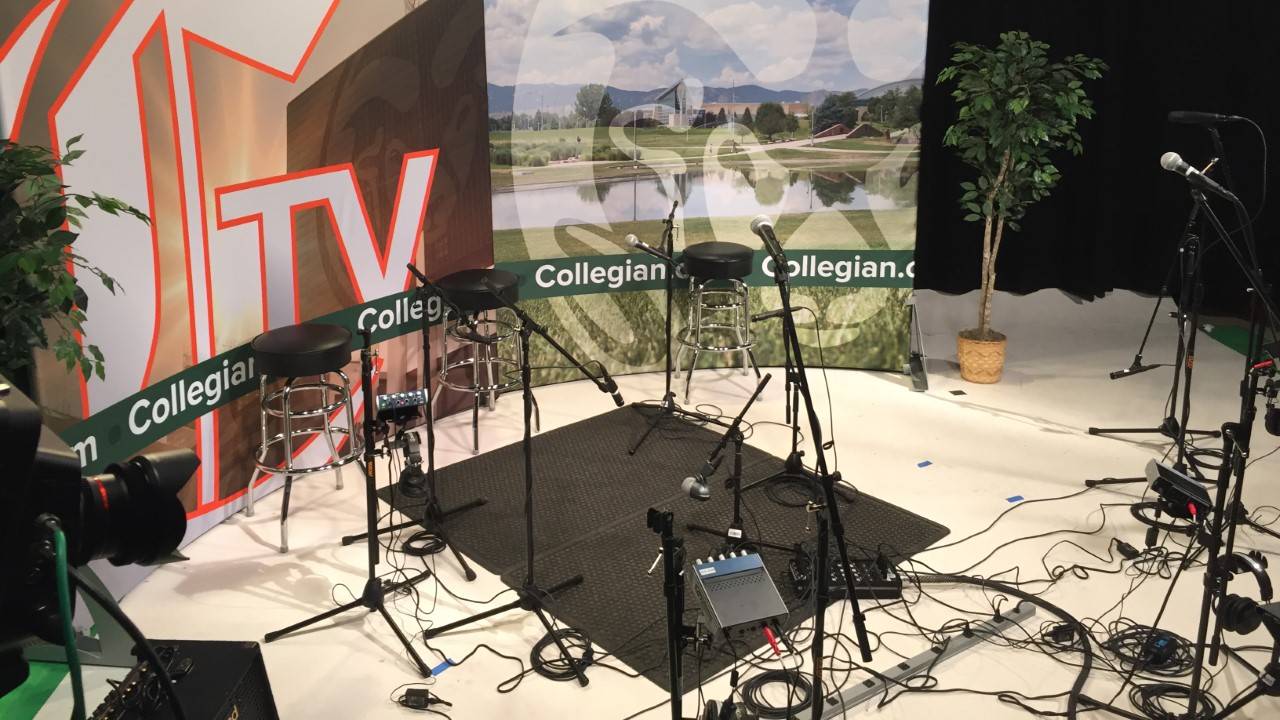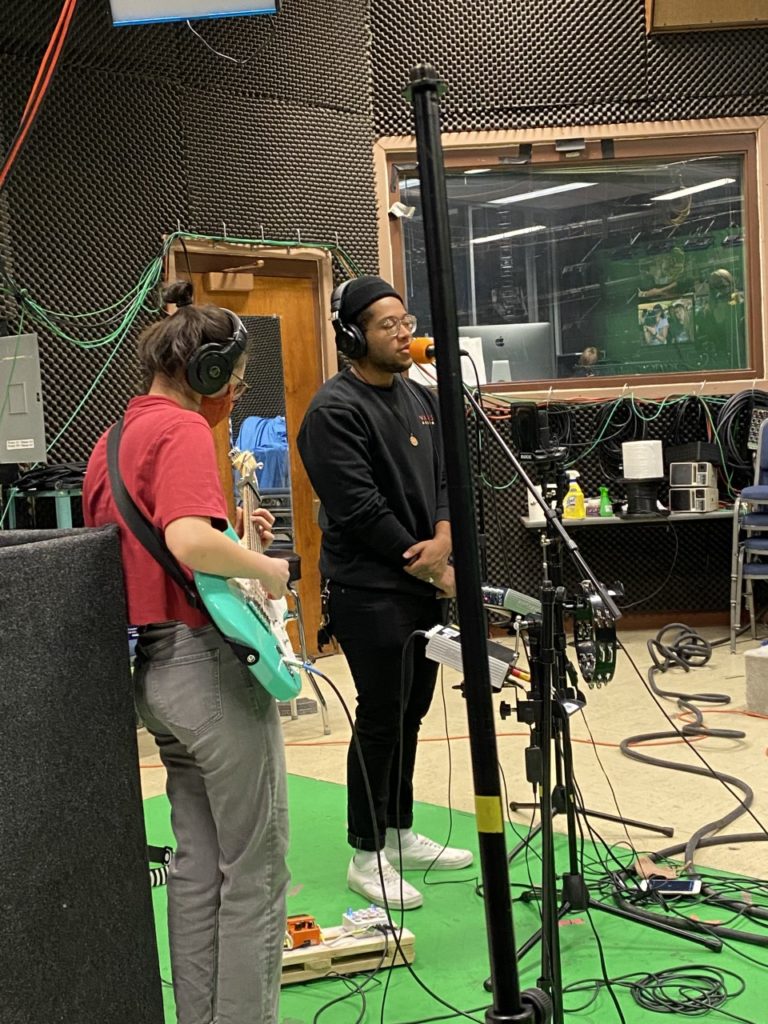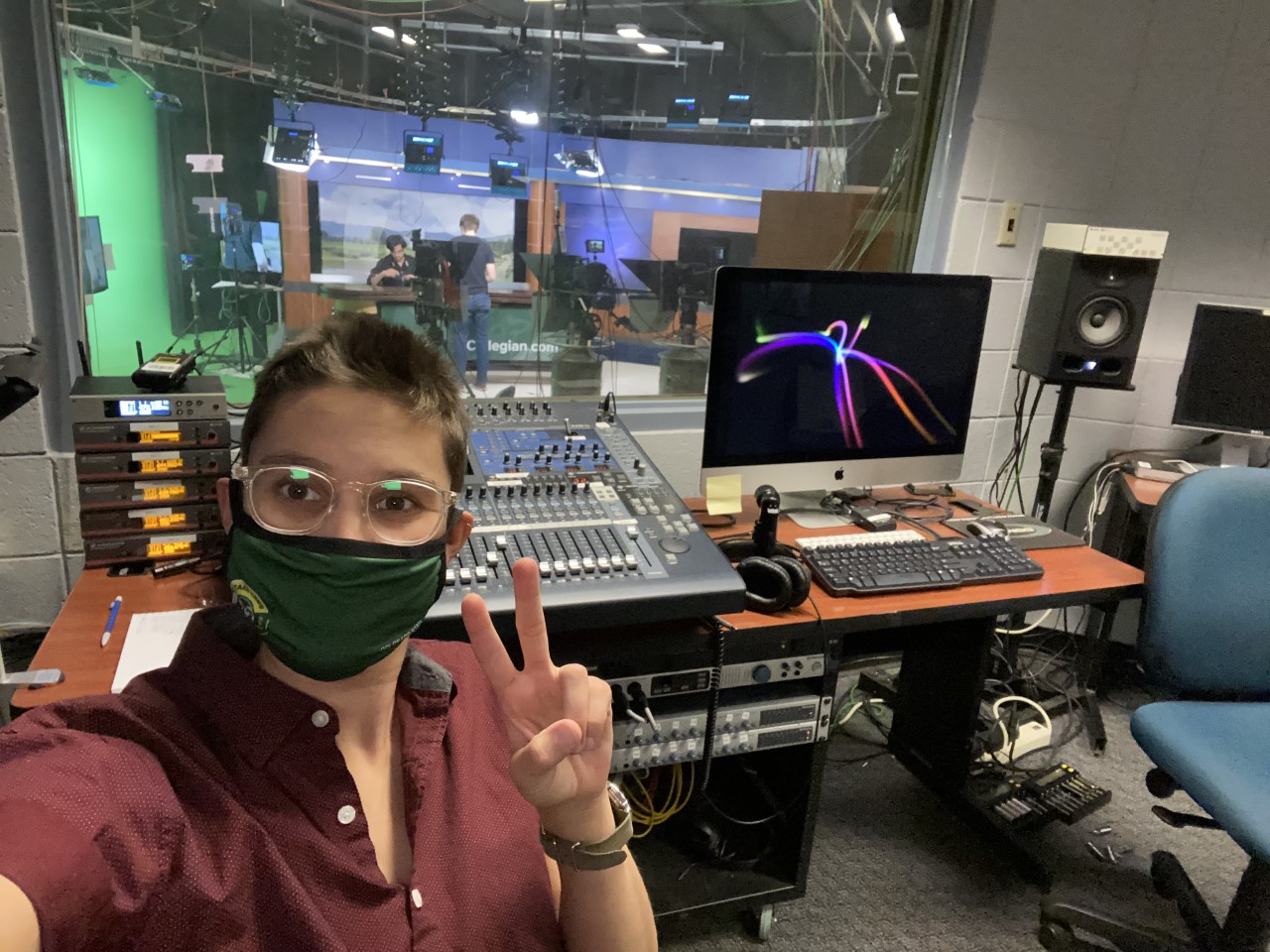
A look at the microphone setup in the CTV studio for the CTV Sessions, a hands-on learning exercise in Hannah Copeland’s audio mixing class.
A local band now has its own set of free, professionally-mastered songs thanks to a group of Colorado State University students who aren’t formally studying music.
“It’s a journalism class,” said Hannah Copeland, the adviser and general manager at KCSU as well as the mastermind behind the Department of Journalism and Media Communication’s audio production class. “But if we just focused on news radio, the capacity for training in that type of audio is pretty small.”
The CTV Sessions
That’s where the bands come in. Last semester, Copeland partnered with the local group the Red Scare for a two-day recording session in the CTV studio. The Red Scare is the latest band to have their EP (short album) published by CSU Journalism students, but many before have also contributed to the learning process since 2017. Students set up the microphones themselves and monitored audio levels to record their own takes on four different songs. Then, students individually mixed every recorded song. The band ultimately chose the renditions they thought were the best.
Cinthia Aguilar’s mix for the song “Reverb Monster” was one of the winners. She’s a senior journalism student who’s interested in the production side of things and said adding a little bit more reverb to the song was a no-brainer given its title. The “chunky” saxophone track is what really sets her apart.
“The track was supposed to be heavy on my guitar, it’s supposed to be a wall of sound adding in more atmosphere,” said Larson Ross, a 2018 graduate of CSU and member of the Red Scare. “The way the students mixed it, they took my guitar a lot lower than it would normally be.
“There was more breathing room in the track, and the saxophone went from being an additional element to something that was really the driving force.”

Students helped mic up bands in the CTV Studio as part of the journalism department’s audio production class.
“I don’t know if you’re supposed to make a saxophone sound like that, but it worked here,” Aguilar said.
The bands do give the students references for how they want their recordings to be mixed, but individuals have some degree of creative control.
Dorina Vida, another senior journalism student, said her mixes involved hours messing with Adobe Audition on her computer trying to clean up instances where the sounds from the drums bled into the microphones that were picking up the band’s guitars.
“I was surprised how I could spend hours doing this, and actually enjoyed it,” she said.
She sees writing as her future career, but said the class will help prepare her for potentially creating podcasts and other unique forms of storytelling down the line.
“It’s another skill I can put under my belt,” Vida said.
She’s good at it too. The Red Scare selected her version of the song “Beach Man” as one of their masters.
A passion for sound
Copeland’s company Peach Islander Productions LLC handles getting the masters together, and they’re posted online as the CTV Sessions. Sometimes, other local recording studios contribute to mastering as well.
She intentionally opened the audio production course up to all types of students from all types of majors since her journey into audio also wasn’t traditional.
“I always like to say, my passion for sounds and group projects started in sixth grade band when I started trombone,” Copeland said.
Her passion for sound led her to her college radio station at Truman State University in Missouri, and she became the owner of her own music venue when she was 20 years old. She later moved to Kansas City and played drums in a band, started producing and later worked on the arts and culture desk at the National Public Radio station in the area, where she got into podcasting.
Then, after meeting a colleague who worked as an adviser at the college radio station for the University of Kansas, she applied and was hired at KCSU in 2016, where she was persuaded to start her own audio production class.
She was able to get a $17,000 investment from the journalism department to outfit the CTV studio and said no one has questioned the use of bands to learn about recording audio.
“What I like about music is it can train you on multitrack recording and taking different elements and making them better,” Copeland said. “It can train you on all the cool effects you might need like reverb, compression, delay, signal flow, etc …”

KCSU adviser Hannah Copeland poses in front of the setup for the CTV sessions.
“Music encapsulates all of that, and I think it’s just fun. That’s the bottom line too: people learn best when they’re having a good time.”
And the Red Scare also walked away with recordings of their songs that were very different than what they’d get in a professional studio.
“It was deeply surprising in a cool way,” Ross said. “It made me rethink how our songs could sound.”
More performances
Check out kcsufm.bandcamp.com this spring for two new student-made EP of local bands.
There’s a preview in the video to the right by with a performance by the Fists of the Proletariat.
Their recordings and another by Cactus Cat will be available in the spring via the CTV Sessions.